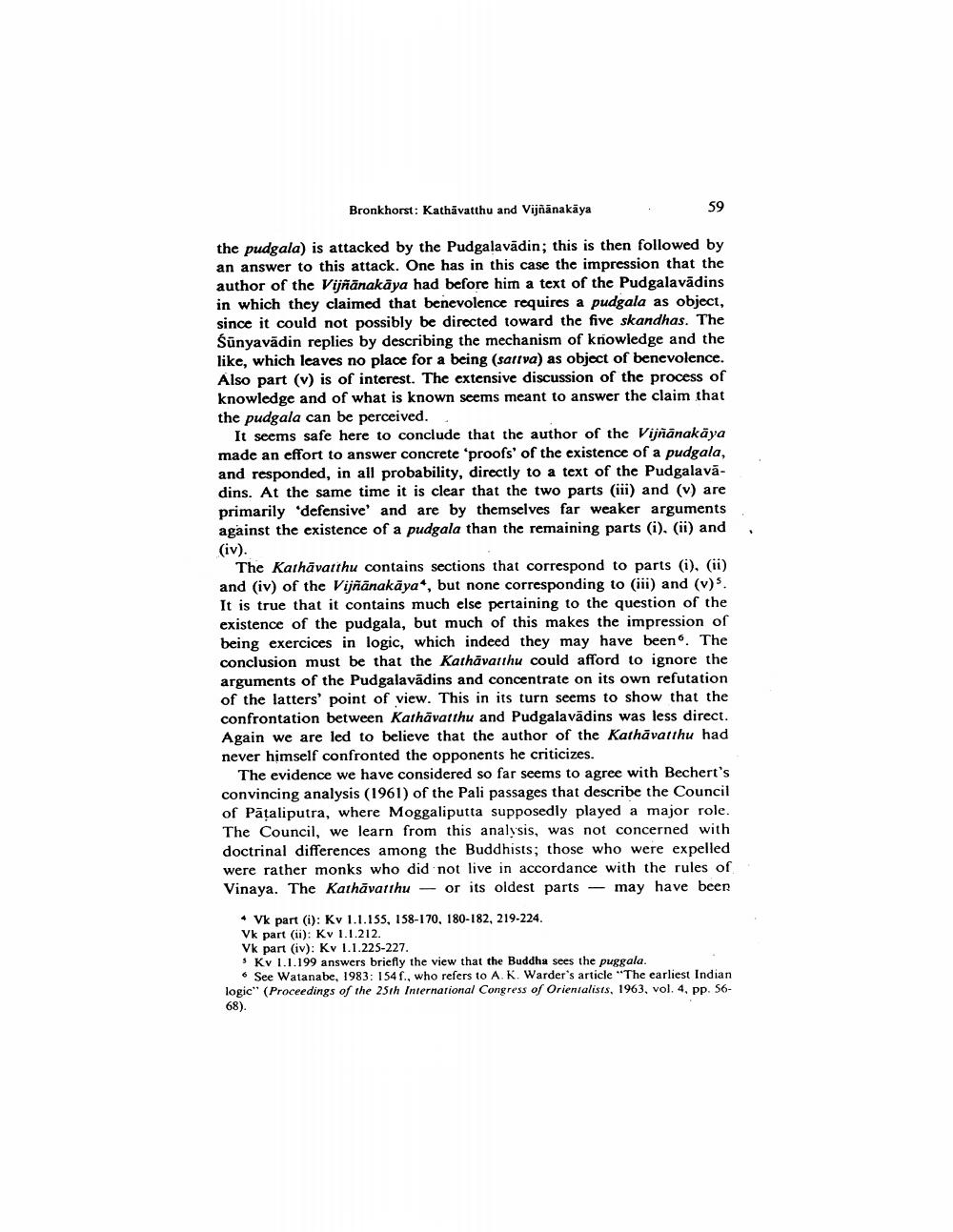Book Title: Kathavatthu And Vijnanakaya Author(s): Johannes Bronkhorst Publisher: Johannes Bronkhorst View full book textPage 3
________________ Bronkhorst: Kathāvatthu and Vijñānakaya 59 , the pudgala) is attacked by the Pudgalavādin; this is then followed by an answer to this attack. One has in this case the impression that the author of the Vijñānakāya had before him a text of the Pudgalavādins in which they claimed that benevolence requires a pudgala as object, since it could not possibly be directed toward the five skandhas. The Sünyavādin replies by describing the mechanism of knowledge and the like, which leaves no place for a being (sattva) as object of benevolence. Also part (v) is of interest. The extensive discussion of the process of knowledge and of what is known seems meant to answer the claim that the pudgala can be perceived. It seems safe here to conclude that the author of the Vijnanakäya made an effort to answer concrete 'proofs' of the existence of a pudgala, and responded, in all probability, directly to a text of the Pudgalavā. dins. At the same time it is clear that the two parts (iii) and (v) are primarily defensive and are by themselves far weaker arguments against the existence of a pudgala than the remaining parts (i), (ii) and (iv). The Kathāvatthu contains sections that correspond to parts (i), (ii) and (iv) of the Vijñānakāya*, but none corresponding to (iii) and (v). It is true that it contains much else pertaining to the question of the existence of the pudgala, but much of this makes the impression of being exercices in logic, which indeed they may have been. The conclusion must be that the Kathāvanthu could afford to ignore the arguments of the Pudgalavādins and concentrate on its own refutation of the latters' point of view. This in its turn seems to show that the confrontation between Kathāvatthu and Pudgalavādins was less direct. Again we are led to believe that the author of the Kathāvatthu had never himself confronted the opponents he criticizes. The evidence we have considered so far seems to agree with Bechert's convincing analysis (1961) of the Pali passages that describe the Council of Pataliputra, where Moggaliputta supposedly played a major role. The Council, we learn from this analysis, was not concerned with doctrinal differences among the Buddhists; those who were expelled were rather monks who did not live in accordance with the rules of Vinaya. The Kathāvathu - or its oldest parts — may have been - Vk part (i): Kv 1.1.155, 158-170, 180-182, 219-224. Vk part (ii): Kv 1.1.212. Vk part (iv): Kv 1.1.225-227. • Kv 1.1.199 answers briefly the view that the Buddha sees the puggala. . See Watanabe, 1983: 154f., who refers to A.K. Warder's article "The earliest Indian logic" (Proceedings of the 25th International Congress of Orientalists, 1963, vol. 4, pp. 5668).Page Navigation
1 2 3 4 5
